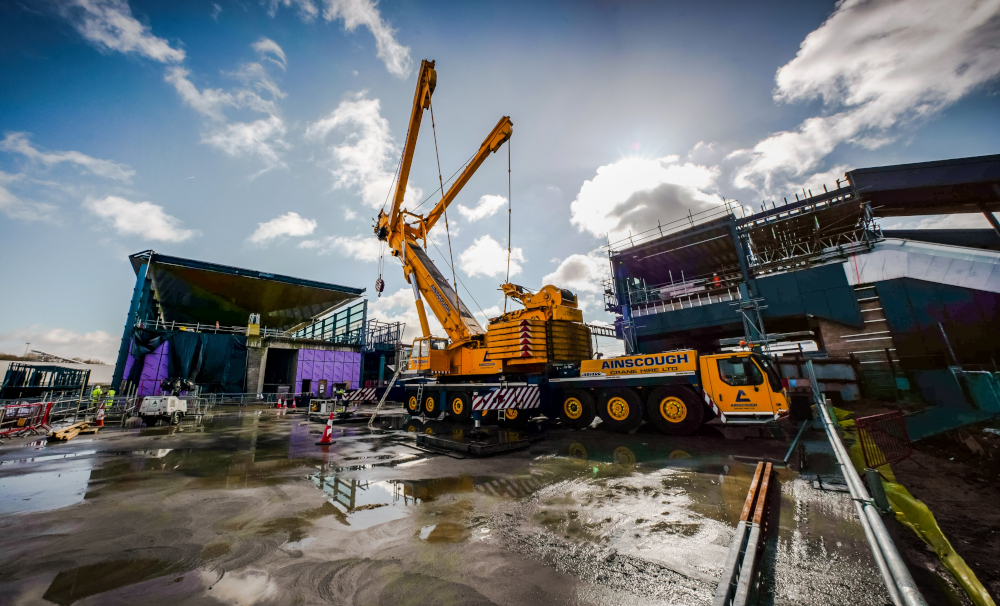Ainscough performs challenging lifts at railway station
21 June 2021Ainscough Crane Hire has installed a new elevated external walkway at the Luton Airport Parkway Railway Station in the UK.
The Luton Airport Parkway Railway Station, located in Park Town, is used to transport passengers to Luton Airport on the St. Pancras line from Central London. A light metro—the Luton DART—is currently under construction, which will be used to transport passengers from the station to the airport, replacing the current shuttle bus service. The system is scheduled to open in 2022.
Ainscough Crane Hire has worked with steel fabrication company Briton Fabricators, to assist with the construction of the Luton DART. Earlier this year, Briton Fabricators hired the crane rental company for the planning and installation of a new elevated external walkway at the railway station. The new bridge will run parallel to the railway line and platform to create an access route for service users.
The job involved the installation of five modular prefabricated units of varying weights and sizes. The dimensions of the biggest module were approximately 15.5m x 4.4m x 5.9m, and it weighed 32.5t.
Extensive lift planning was required because of the lift’s proximity to the railway line and neighbouring buildings. Various crane setup locations had to be decided upon for each module in order to minimise slewing towards the railway line.
James Storey, CAD technician at Ainscough Crane Hire, said: “This was a challenging lift to plan due to the number of environmental and time constraints we had to design around for the Parkway Station. However, thanks to the expertise of our team, the bridge was installed on time and with minimal disruption to the site and its service users.”
Work took place over a week-long period during night shifts to avoid disruptions to rail services. Ainscough supplied two cranes for this job, a Liebherr LTM 1500-8.1 rigged with a 165t counterweight and a Liebherr LTM 1250-6.1, rigged with a 97.5 t counterweight. The largest of the five radiuses the team worked to was 35m.
